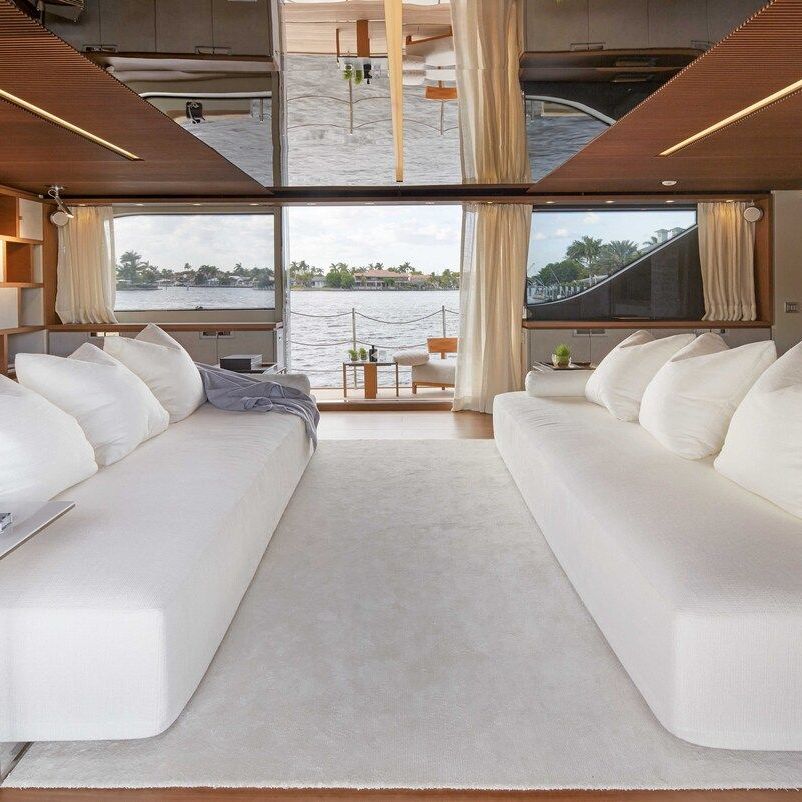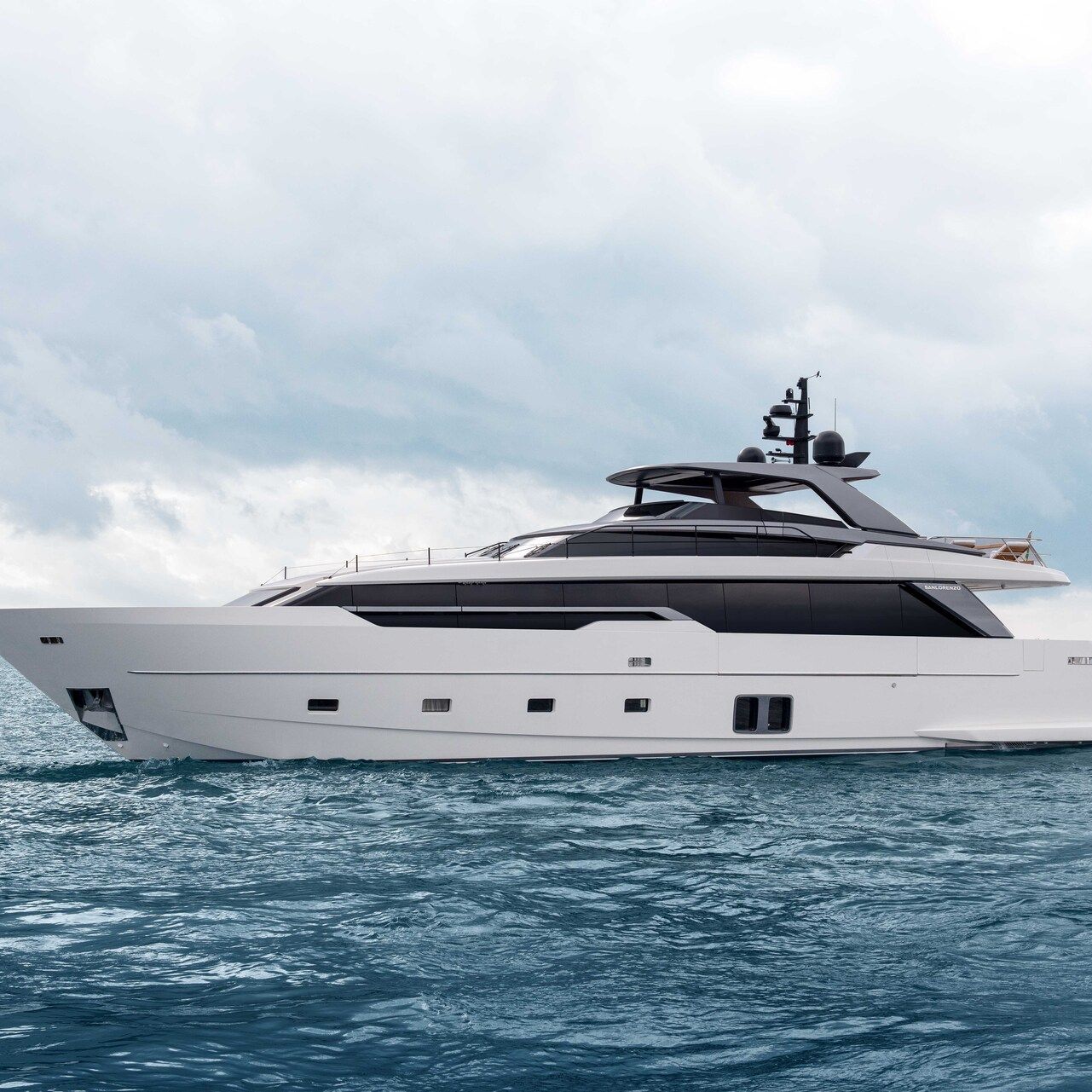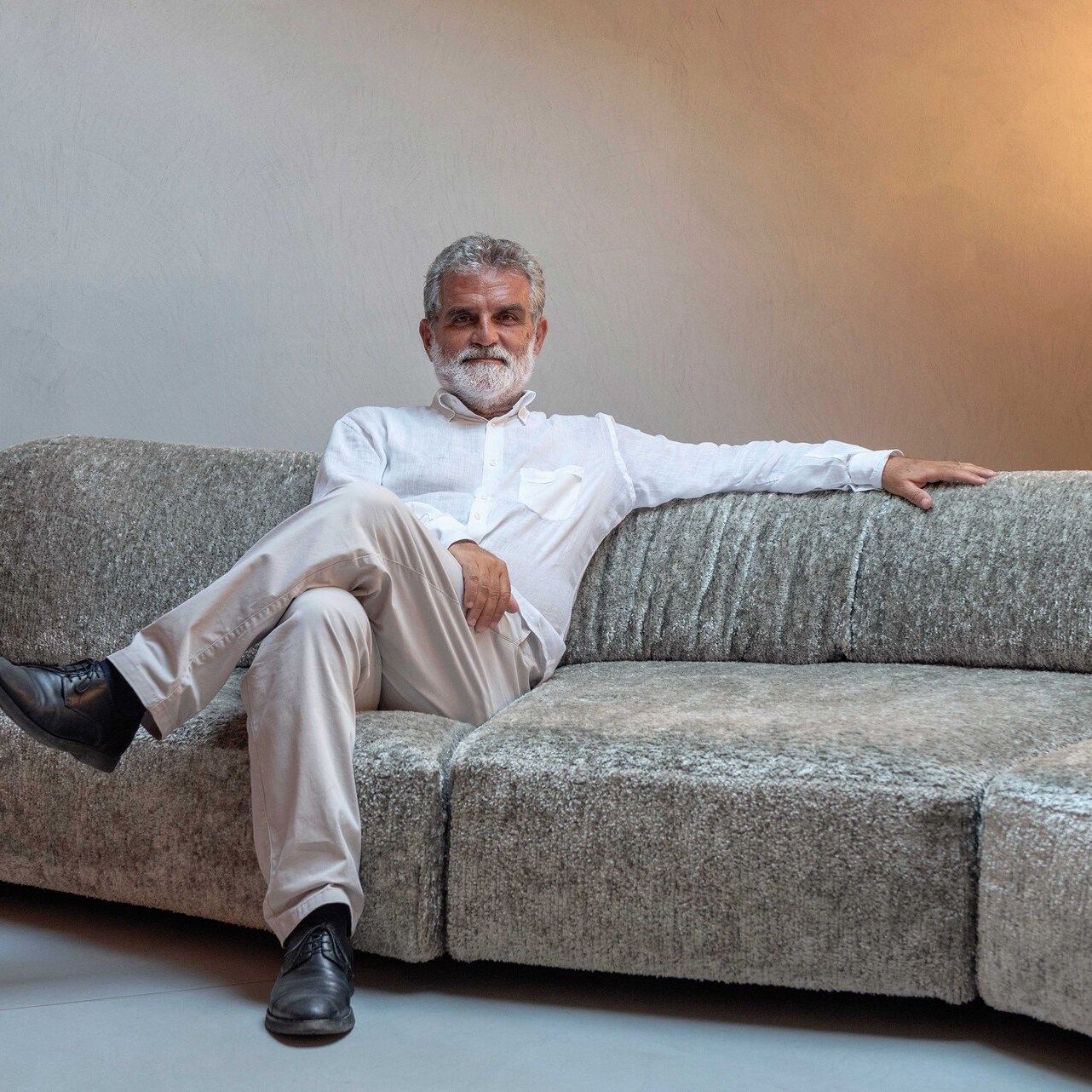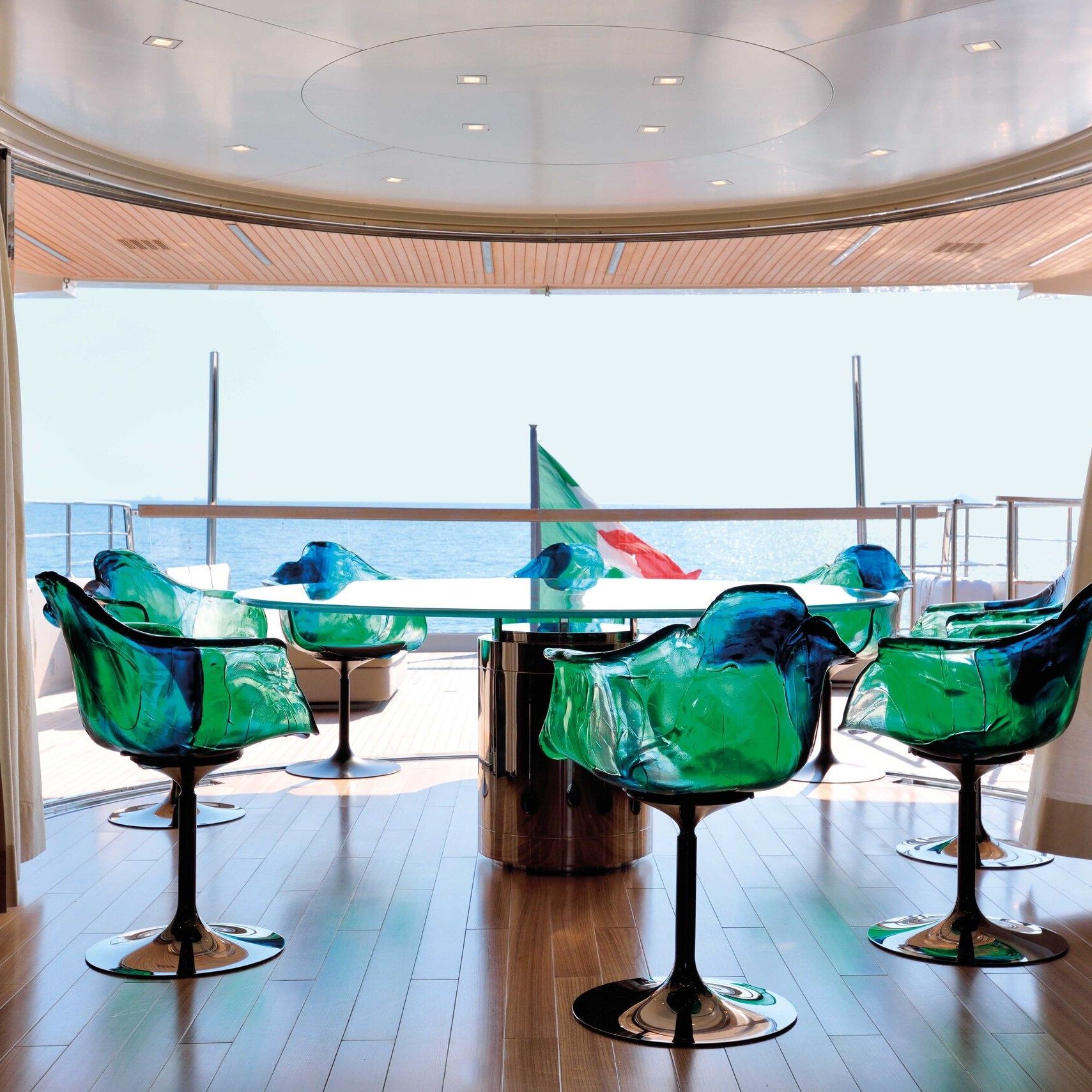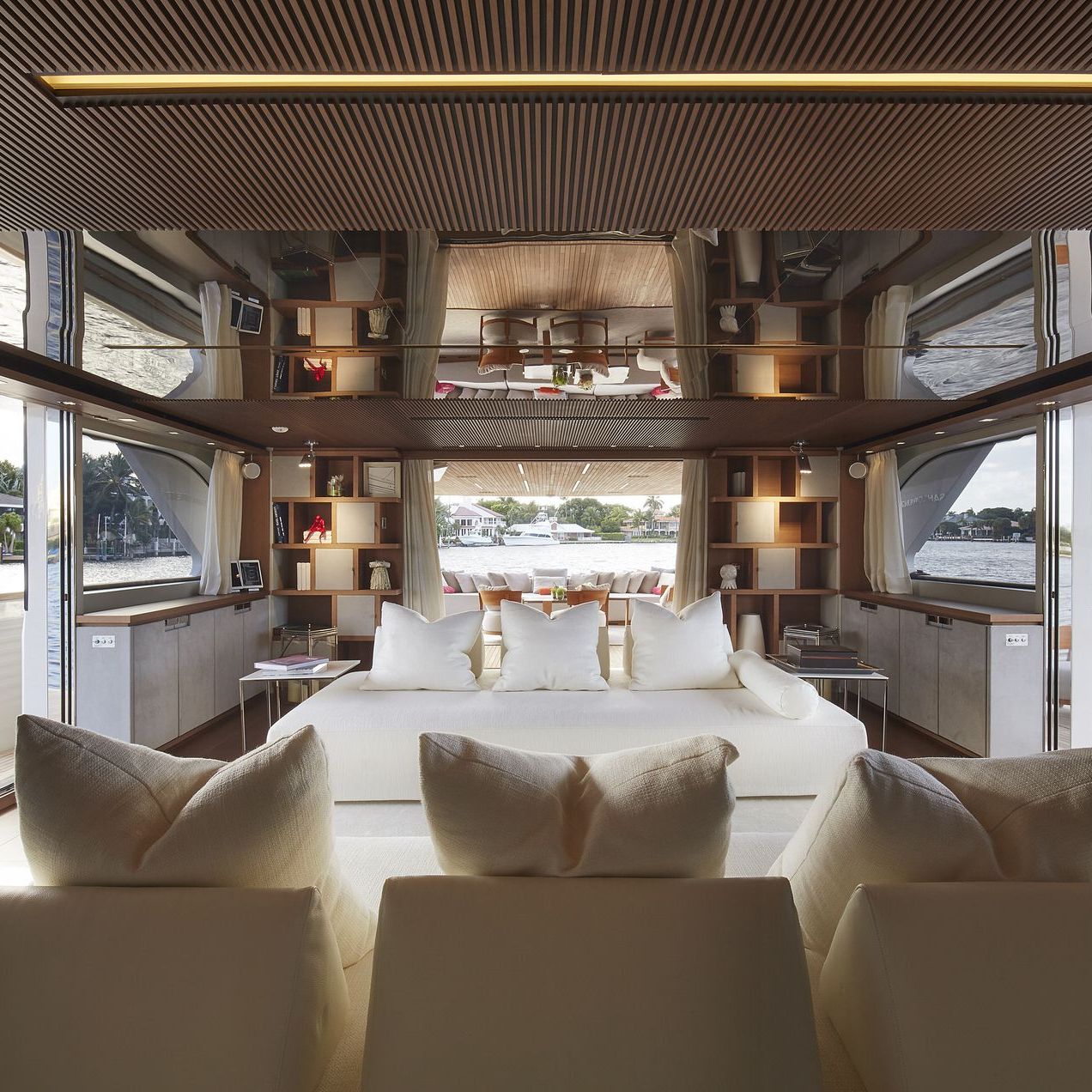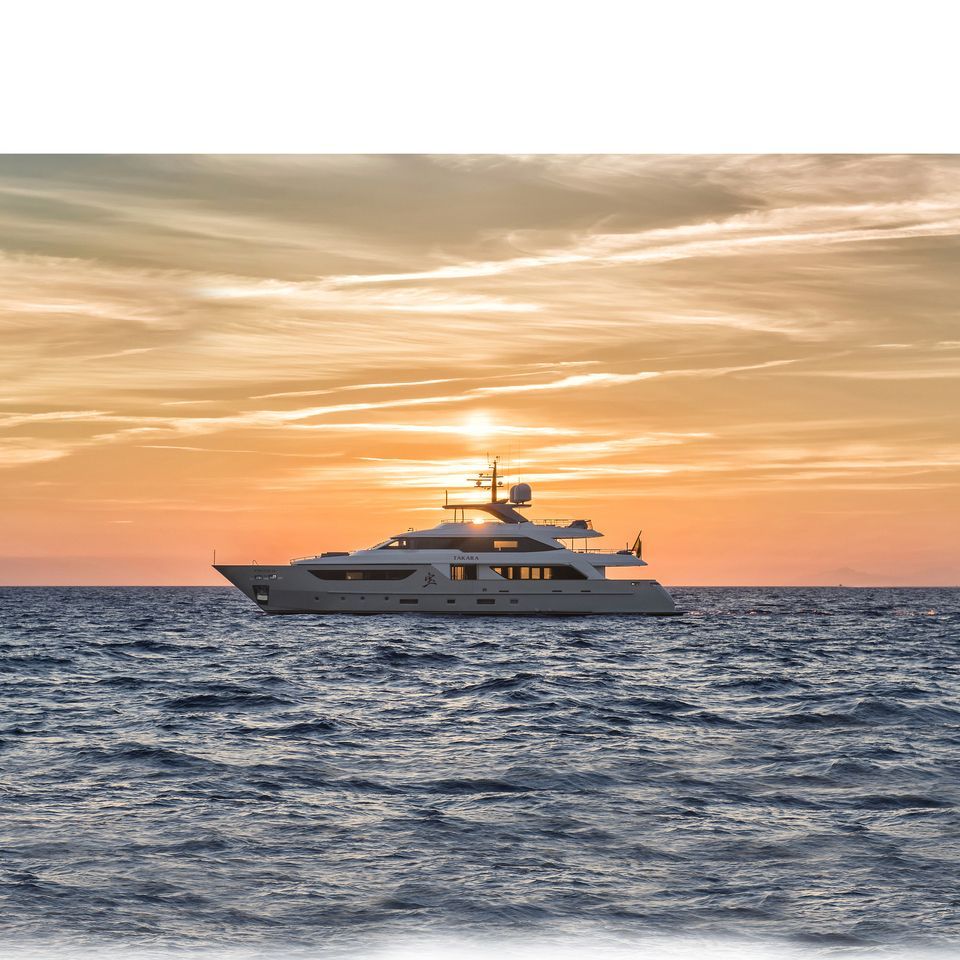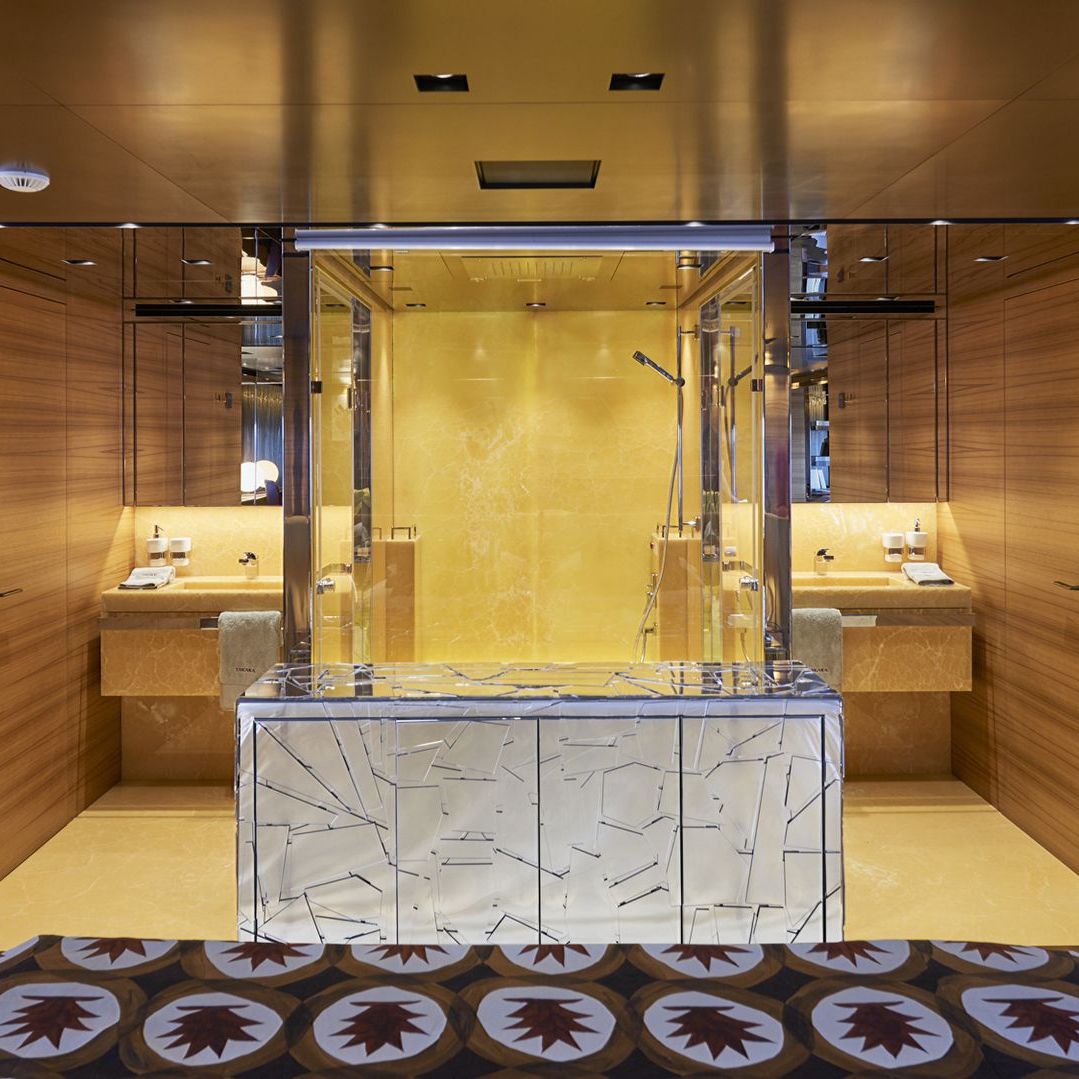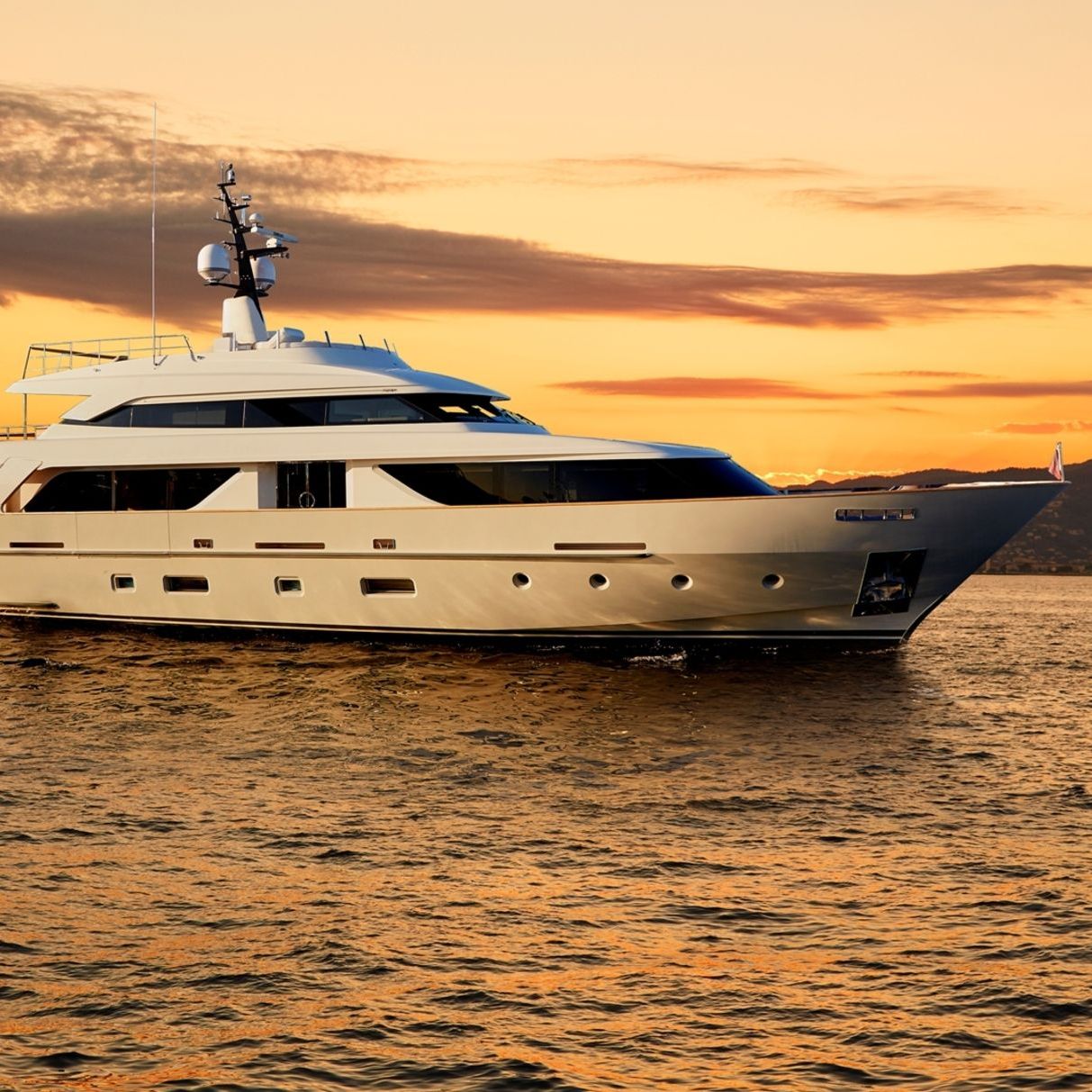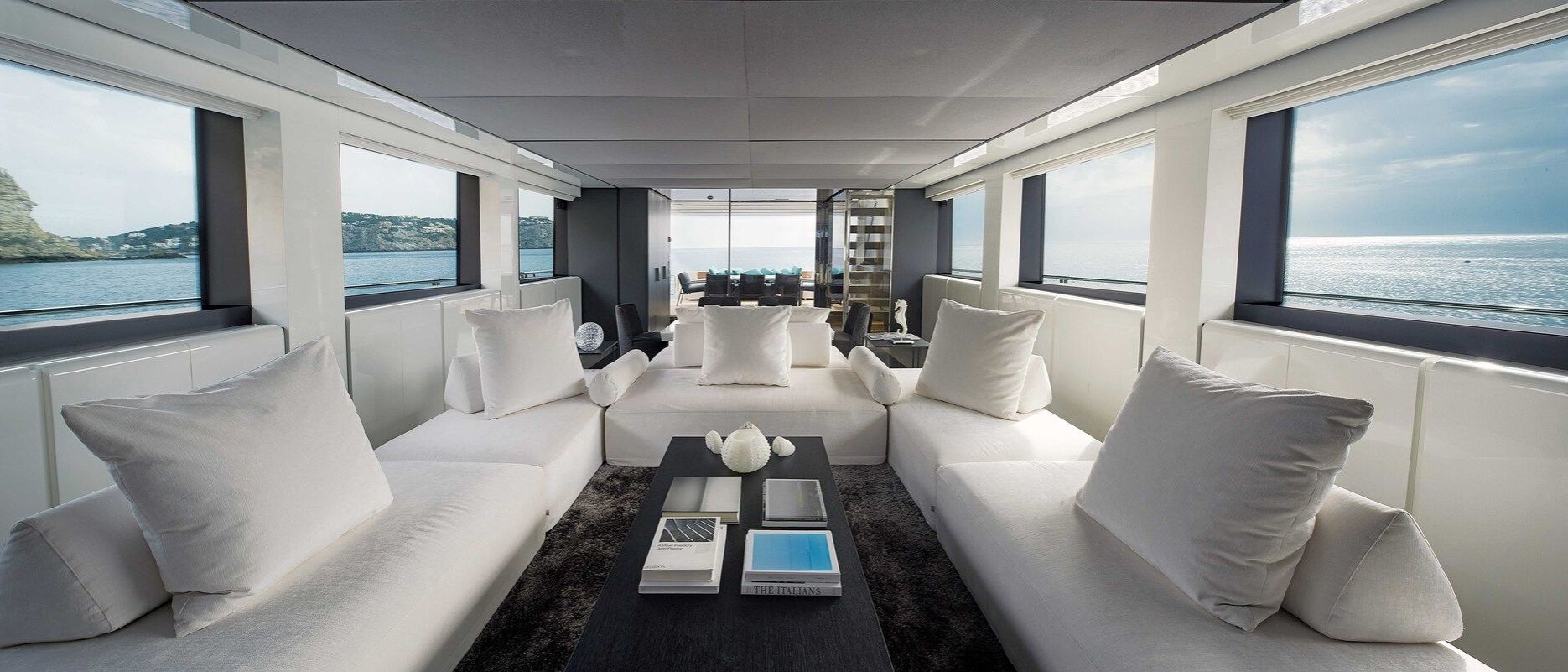
October 2023
Laura Arrighi
On the boat like at home
The horizons of yachting broaden overseas as they embrace art and design.
No connection is more dynamic and deep than that between yachting and architecture. The attraction between the two disciplines started to deliver its effects in the twentieth century, driven by the advancements of technique, which led to build ever bigger and faster ships, like veritable floating buildings. In Vers une architecture, published in 1923, Le Corbusier wrote that those moving giants were also concrete evidence of advancing progress and industrial products in which one should discern – not only beauty – the harbingers of new architectures, built on alternative living options that responded to different regulating lines, different purposes, different measurements, different furnishings, different lifestyles, different aesthetics, different residents. In a time shift, now we see a reversal, in this interplay of perspectives. For many reasons, it is yachting that flirts with interior design and home implements. Such concepts as ergonomics, function and performance now sit next to new paradigms that belong more specifically to residential buildings, that concern a certain type of 360-degree visual, tactile and mental wellbeing. As Luca Zaniboni Interior Design Multitasking states. Crossroads between boating and architecture states “Attempts have been made at overcoming the dichotomy between high-tech shells and interiors that cling to the stylistic devices of the past, which exuded a ‘nautical vibe’ with compartmentalised layouts and quite ‘heavy’ materials, which the collective imagination instantly associates with sailing. ” Their interiors started to look to functional furnishings, of course, on condition they configured and optimised more flexible layouts. And on condition they responded to those needs for softness, comfort and contemporary aesthetics that have moved out of the home and into the boat. Edra has supported the foray of home décor into boats. Because of the features of its products and the option, with a few quick adjustments, to make its furniture perform even on moving spaces, it responded to such demands and worked for Perini, Maiora, Ferretti, Riva, Amtec and Cantieri Sanlorenzo.
Here, we are going to speak of Cantieri Sanlorenzo, an Italian company and one of the best in the world, which some time ago set off for a new journey through interior design. Since 1958, Cantieri Sanlorenzo has been designing and building yachts that withstand the test of time and the test of the sea. It chose Edra to decorate the interiors of some of its floating gems. As well as of those of its headquarters in La Spezia, with the On The Rocks sofa.
In the Ameglia offices, Edra Magazine met Sergio Buttiglieri, style director at Cantieri Sanlorenzo since 2006, and one of the men behind such change of route in the world of interior design for yachts. Buttiglieri has fought against the ultra-conservatism of the myth of the yacht as an untouchable legend. In such battle, he had a broadminded businessman, Massimo Perotti, on his side.
ow is the idea of interiors changing in the world of design for yachts?
Despite its illustrious background – take for instance the unsurpassable liners of the mid-20th century decorated by Gustavo Pulitzer and Gió Ponti – in the last few decades yachting was getting stuck into some imageries. Such ultra-conservatism, as Roland Barthes points out in Mythologies, was built on the fact that yachts are always paradigmatic “homes”, “adorable caves” and “the satisfaction of being enclosed there is conveyed by the porthole, an excellent metaphor of the observation of the quintessential outdoor infinity that are the sea and the sky through an armoured eye”. This crystallised world had got struck at the George Nelson style of interiors and at layouts that did not interact with the current way of living on a yacht, which is much more informal and more adaptable to the needs of an international clientele. To revolutionise such fixedness, I thought of summoning some names of Italian and international design that do not belong to the world of yachting but are known and respected in the world of architecture and that no shipyard had ever thought of calling in to design the interiors of a yacht. The result was: dilated spaces laid out in unexpected ways, unusual open spaces, smart updates on traditional materials, contemporary furniture mixed with fine vintage pieces, some works of art, including site-specific ones, thrown in, and a definitely contemporary and functional vibe. In this crystallised imagery, Sanlorenzo managed to bring in unconventional languages that amaze and disrupt the perception of the limits that one always has when on one of these self-propelled gems, made to sail the wonderful sea in total relax.
So, how has the relationship between interior design and yachting changed, then?
My job at Sanlorenzo is to create ‘tailor-made dresses’ for our ship-owners, who chose us because of our attention to the formal quality of timeless lines, that try not to mix too many styles together as, sadly, it often happens in this world. In our shipyard, ship-owners find the taste of the great Italian sailing tradition again. Starting from a culture that was getting lost in fickle and contradictory rivulets, we managed to capitalise on all styles and bring that undisputed quality back into contemporary yachting. My interior design projects are always based on a dialogue with the ship-owners, you should never contradict them but bring the best result home by exchanging opinions and ideas.
Over the years, Sanlorenzo has gone through a consistent journey, making strategic choices in the world of art and design. As well as testing the ergonomics of the furnishings, we explain design to our ship-owners, and contextualise it with reference to their authors and age. In addition, we rely on the harmony that imbues any cultural and natural expression of this region. This led me to increase the mix of design and even art at Sanlorenzo, without ever betraying the heritage of our brand. Breakthroughs based on its specific maritime tradition.
What are the concepts and keywords that drive the design of boats and yachts nowadays?
I will mention some of the four designs by Sanlorenzo that have been shortlisted by ADI – the Italian Industrial Design Association – to compete for the Compasso D’Oro award 2020. The first one is the SX 88, a 29-metre yacht by Piero Lissoni. It provides an unusual open space that emphasises the specificity of this yacht, with its large windows and vast outdoor areas. The Explorer, a 42-metre super-yacht by Antonio Citterio and Patricia Veel, where we worked at the interiors and outdoor areas, and the 34-metre SL 102° by Bernardo Zuccon, the first asymmetrical yacht in the history of sailing, which has been a huge success, revolutionising the style of Sanlorenzo planing hulls. In my opinion, it is a sort of tribute to the philosophy of Bruno Zevi, the famous architectural historian, who, in his legendary book Il linguaggio moderno dell’architettura, included asymmetry, and particularly asymmetry, in the list of invariants of contemporary architecture, as one of its main distinctive features. Finally, one of our installations Il mare a Milano of 2017 was selected, created in collaboration with Studio Neo for the Triennale in Milan, during the week of the Salone del Mobile. A reconfirmation of our organic relationship with contemporary design.
A relentless pursuit of innovation, a will to achieve new targets in terms of experimentation can be felt in such projects. A value that Edra identifies with.
We choose the best designers, the best brands, and Italian furniture, including the pieces by Edra that we have successfully suggested to quite a few ship-owners. They helped us inject new life into the history of national yachting. In particular, we used the Sherazade sofas for their comfort and versatility. Platforms that recreate an informal vibe in our living spaces and that perfectly fulfil the wish for versatility that our international ship-owners are increasingly demanding. For the SD 112, the Mexican owner, a famous architect who loved Edra, chose the Sherazade to transform its living quarters. Using the adjustable backrests of the sofa, the lounge can turn into a functional dining room, with the folding table in the middle if needed. Another successful experience of a lounge furnished with the Sherazade is that of the SL 118, owned by a big property developer from Munich with a passion for design. In a more structured layout, he chose these seats for his fore living area, adjoining a home cinema area, and a dining area at the stern. For a Spanish owner, instead, who also worked in property development and restaurants, we selected the Scrigno sideboards for both the dining area, which dialogues with Ionda’s artwork, and the ship-owner’s cabin. Edra customised the sideboard, making it work as a TV stand through a height-adjustable system and making it steal the show in that spectacular master suite. The versatility of Italian companies is impeccable in the way they know how to interact with the requirements of the yachting world, as they produced special pieces that suited our needs in no time.
What can you tell us about the relations with art, the workers and the local community that sound so important and deeply-rooted in your history?
The yachting world needed to connect with seemingly very different worlds, which, with their contribution, made it gain dignity and quality. Such quality needs the very best manufacturing processes, which, as Enzo Mari said at a conference organised by Sanlorenzo in Lerici, in 2006, is not a random fruit of a place, it is the stratification of the local history that makes it unique. And, as for stratifications in the sailing world, Liguria, along with Tuscany, is second to none.
I also invited Stefano Boeri, then the director of Domus, to that conference, and he told us how the Mediterranean Sea has always been run through by encoded routes, a sort of solid sea with all its codes, from the code of loisirs to the commercial one, to that of migration. And the history of sailing inevitably fitted in with such passwords. For our ship-owners, including the non-European ones, the Mediterranean is the ideal sea. It is a crossroads of extremely old civilisations and encompasses a multitude of destinations.
The Mediterranean culture is peerless for those who love to sail and be rocked by its boundless beauty.
 |
Laura Arrighi Architect with a PhD in Design, and freelance web writer and editor. She mainly works in interior decoration, design and fashion and has a special interest in the hybridization of different disciplines. She juggles writing, research, teaching and design, as she works for public institutions and some of the most important Italian architectural firms. |





